In an increasingly bustling world, where the clamor of everyday life can often feel overwhelming, the appeal of tranquility becomes undeniable. Imagine stepping into a sanctuary that embodies peace and simplicity—a room where each element resonates with harmony and balance. This is the essence of a Japanese bedroom,where the design philosophy focuses on fostering serenity through open space layouts.In this article, we will explore the art of creating a Japanese-inspired bedroom that seamlessly integrates nature, minimalism, and functionality, inviting a sense of calm into yoru daily routine. From carefully chosen materials to the careful arrangement of furniture, we will guide you on a journey to cultivate a tranquil living environment that reflects the beauty of simplicity and the restorative power of a peaceful space. Join us as we delve into the principles of design that transform a mere bedroom into a haven of serenity.
Embracing Natural Light to Enhance Tranquility in Japanese Bedroom Design
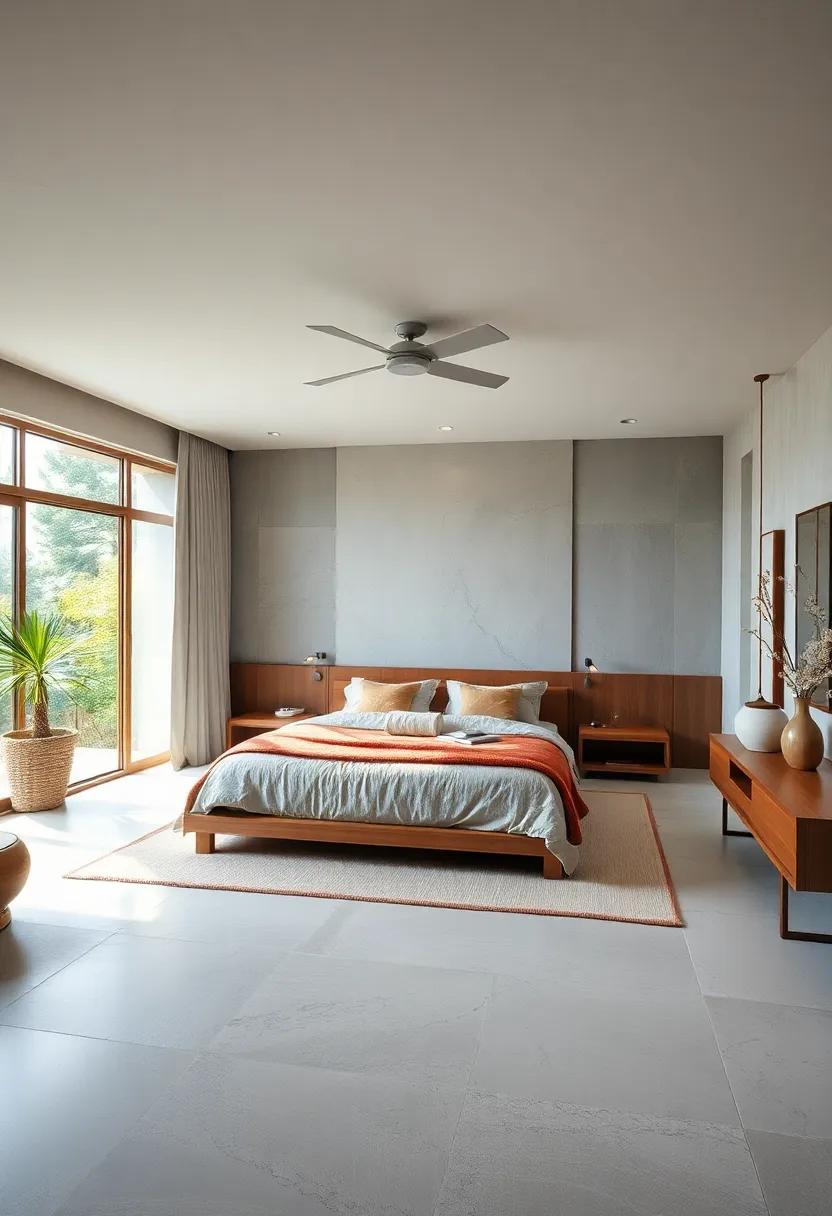
In the pursuit of tranquility, Japanese bedroom design harnesses the beauty of natural light to cultivate a serene environment. Large windows invite soft daylight, illuminating minimalist spaces while harmoniously blending indoor and outdoor elements. This approach embraces the principle of fenestration, where carefully placed openings frame scenic views and create a sense of connection with nature. To enhance this effect, consider the following features:
- Sliding Shoji Screens: These traditional wooden frames with translucent paper allow light to diffuse gently, creating a calming atmosphere.
- soft Color Palettes: Use light hues such as pale beige, soft greens, or muted blues that reflect sunlight and amplify the room’s airy ambiance.
- Strategic Plant Placement: Incorporating indoor plants not only purifies the air but also adds vibrant life that dances in the sunlight.
Effective light management is integral to achieving a tranquil sanctuary.Innovative concepts such as open space layouts diminish visual clutter while maximizing the flow of natural light throughout the room. Consider using multipurpose furniture to maintain openness—this can include low-profile beds and minimalist side tables that encourage simplicity. To exemplify this approach, refer to the following layout options:
| Layout type | Key Features |
|---|---|
| Zen retreat | Low furniture, neutral tones, and abundant greenery |
| Light-Filled Studio | Open floor plan with large windows and minimal furnishings |
| Peaceful Nook | dedicated space for meditation, bathed in natural light |
Soft Color Palettes Inspired by Nature for a Serene Atmosphere
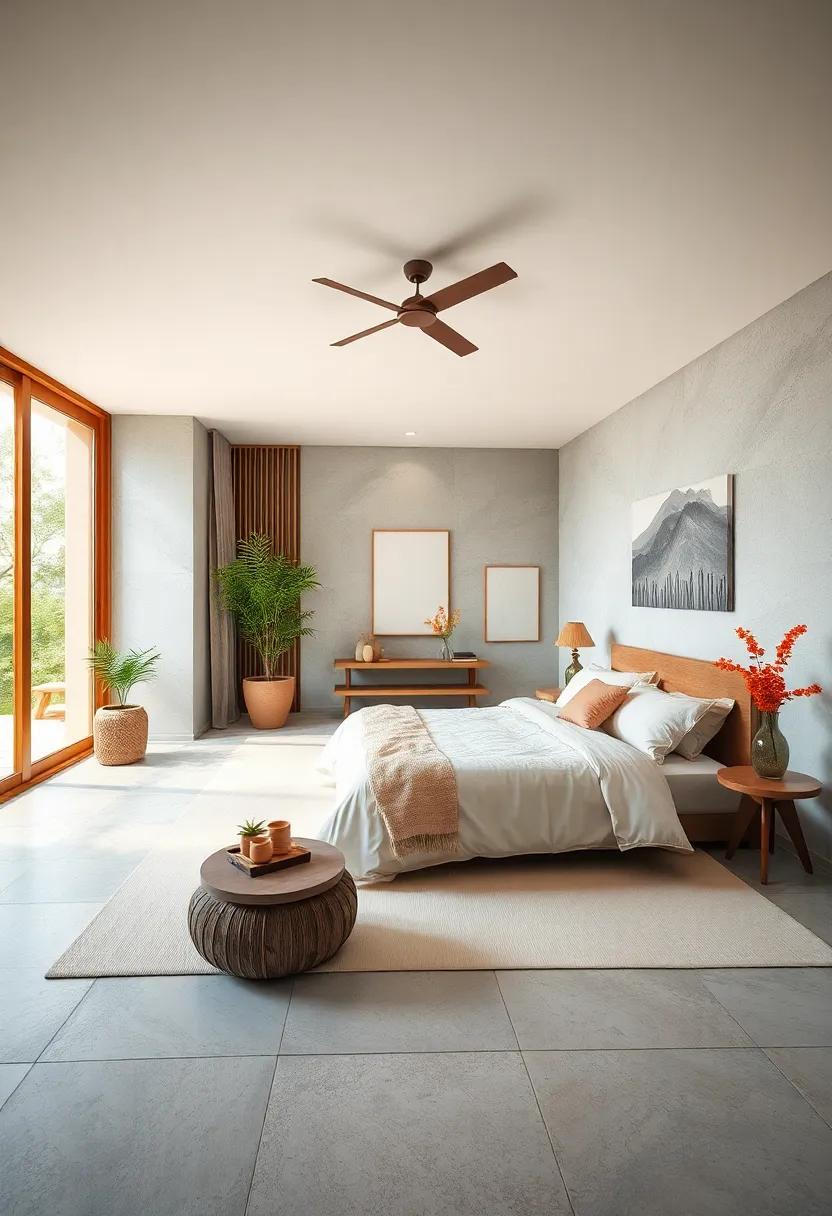
Creating a serene atmosphere in your Japanese bedroom can be beautifully achieved through a carefully curated color palette inspired by nature. Soft shades drawn from the earth, sky, and flora help to evoke a sense of calm and tranquility. Consider incorporating hues such as:
- Pale Green: Reminiscent of fresh leaves, it instills a sense of renewal.
- Sky Blue: A nod to clear skies, promoting relaxation and clarity.
- Soft Beige: Reflective of sandy shores, it offers warmth while maintaining neutrality.
- Muted Lavender: Inspired by gentle blooms, it adds a whisper of elegance and peace.
Pairing these colors with natural materials enhances the serene vibe. As an example, bamboo flooring can beautifully complement soft greens or beiges, while rice paper lanterns can diffuse light and create a soothing ambiance. To visualize how these colors can interplay within your space, consider the following table, which outlines an example color scheme component:
| Color | Description | Suggested Use |
|---|---|---|
| Pale Green | A refreshing, calming hue | Accent walls or decorative elements |
| Soft Beige | A warm, inviting base | Wall colors and furniture finishes |
| Muted Lavender | A soothing subtle tone | Textiles like bedding or curtains |
| Sky blue | Light and airy, perfect for open spaces | Artwork or decorative vases |
Minimalist furnishings that Promote Peace and Functionality
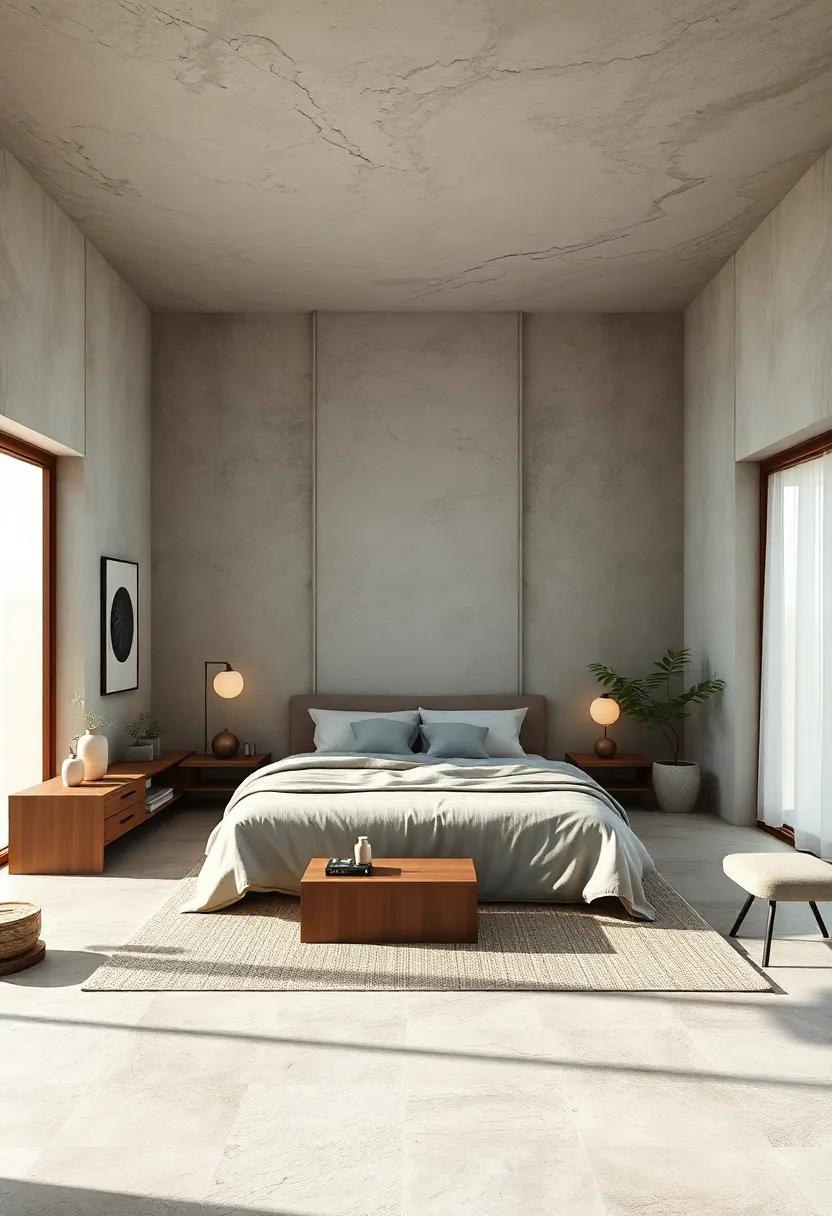
in a Japanese-inspired bedroom, minimalism is not merely an aesthetic choice; it is indeed a philosophy that encourages clarity and peace. A focus on simplicity allows for a space that nurtures mental well-being. Furnishings should embody functionality while promoting an open atmosphere. Consider using elements such as:
- Low-profile tatami mats: Providing a natural base that allows ease of movement and relaxation.
- Futon bedding: Easily stored during the day to free up floor space for meditation or yoga.
- Sliding shoji screens: Enabling flexible room layout while aiding light modulation.
The arrangement of furniture plays a crucial role in enhancing the feeling of tranquility. Aim for a balanced layout that prioritizes natural light and unobstructed pathways. Pieces such as:
| Furniture | Function |
|---|---|
| Low wooden bench | seating and display for plants or decor |
| Simple built-in shelves | Storage while maintaining an airy feel |
| Natural wood table | Center for activities like reading or journaling |
By merging practicality with simplicity, each element within the room becomes deliberate, leading to a serene environment conducive to relaxation and reflection.
Incorporating Organic Materials to Connect with the Earth
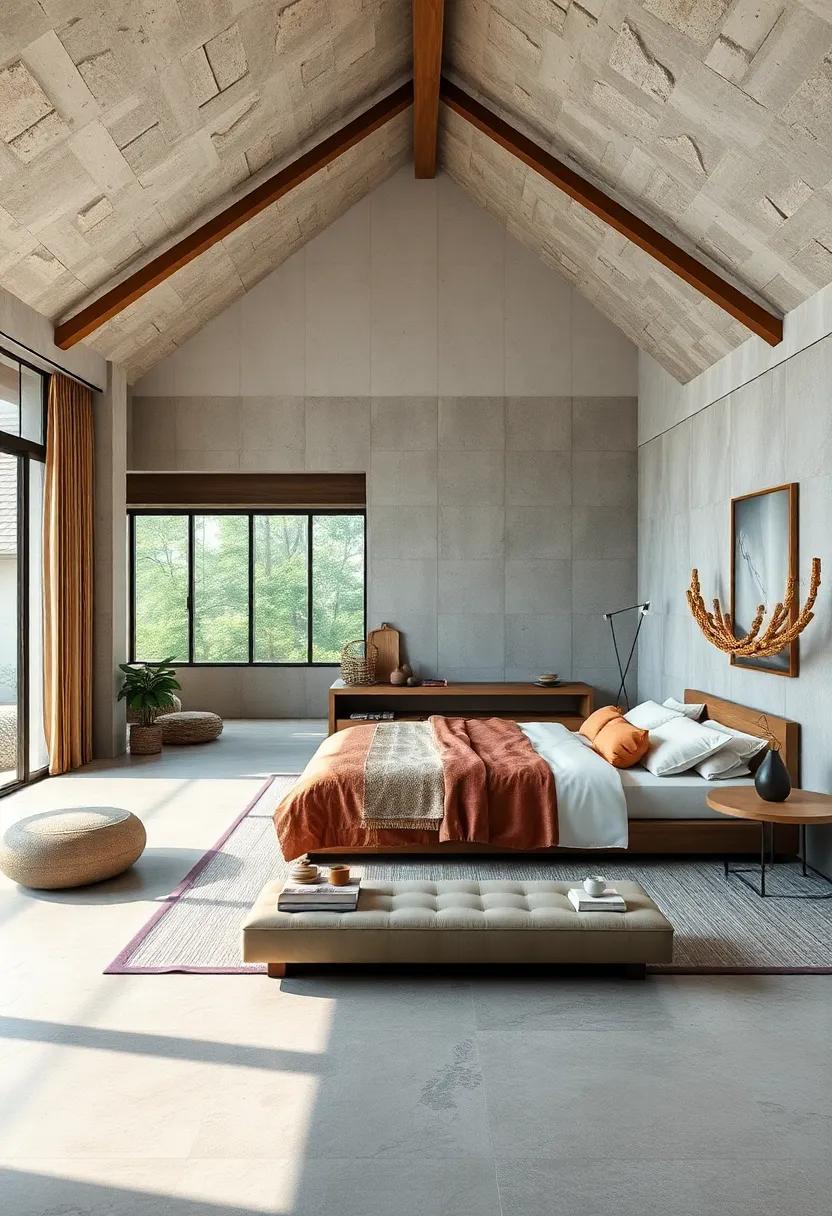
To create a sanctuary that mirrors the beauty of nature, integrating organic materials into your bedroom design is essential. Opt for natural woods, such as bamboo or cedar, to construct furniture and flooring. These materials not only enhance the aesthetic appeal but also promote a sense of warmth and tranquility. Incorporate textiles made from cotton, linen, or wool, as they provide both comfort and a tactile connection to the elements. The use of stone, whether in accent walls or decorative pieces, introduces an earthy quality that resonates with the surrounding landscape.
Emphasizing sustainability, consider the following organic elements for your serene space:
- Reclaimed Wood: Furniture crafted from reclaimed materials offers character and helps reduce environmental impact.
- Natural Paints: Select paints made from non-toxic, organic compounds that contribute to indoor air quality.
- Live Plants: Incorporate greenery that thrives indoors, enhancing air purification and adding vibrant life to the space.
- Clay or Terracotta Accents: Use terracotta pots or sculptures to add rustic charm and tie in organic themes.
| Organic Material | Benefits |
|---|---|
| Natural Wood | Durable,aesthetically pleasing,and sustainable. |
| Soft Textiles | Comfortable, breathable, and enhances coziness. |
| living Greenery | Improves air quality and adds natural beauty. |
| Stone Accents | Brings an earthy element and adds texture. |
Zen Elements: Integrating Indoor Plants for Airy Vibes
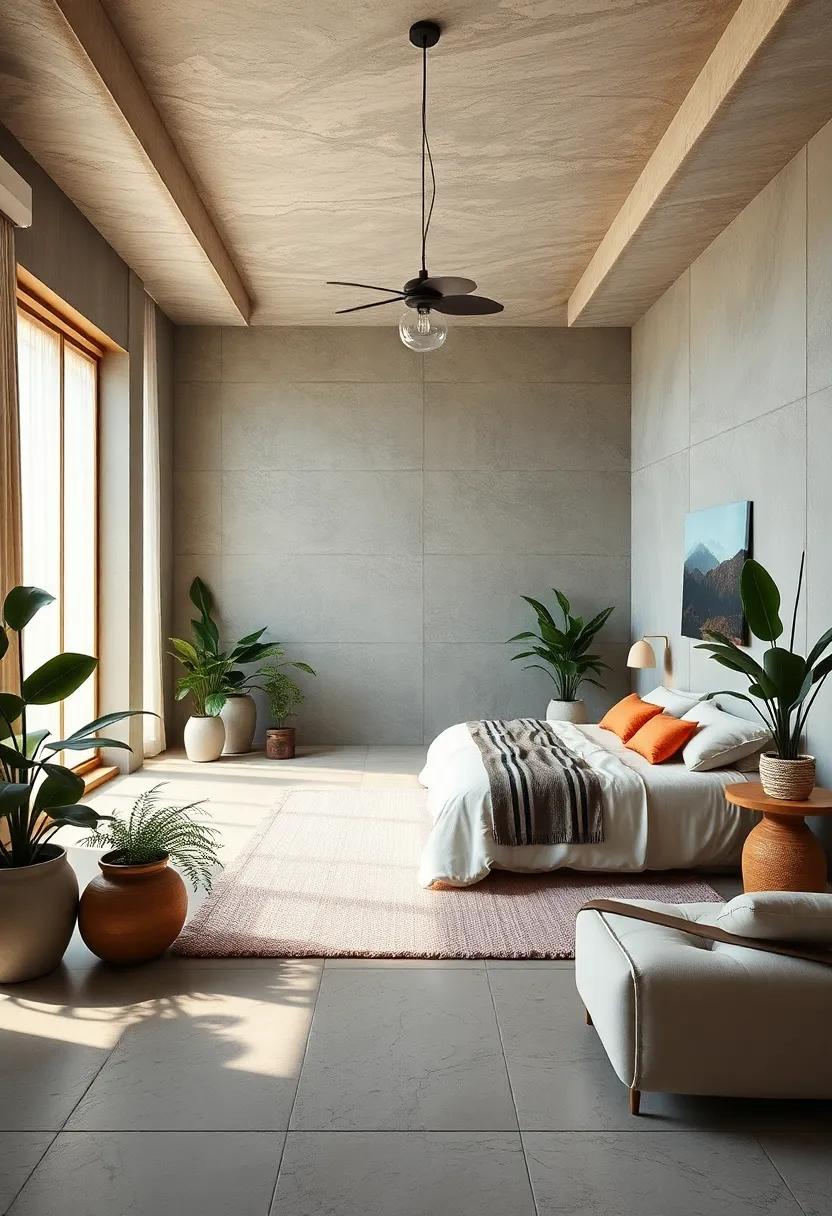
To cultivate an atmosphere of peace and clarity within your Japanese-inspired bedroom,integrating indoor plants is essential. Not only do they add a vibrancy that softens the lines of minimalistic decor, but they also purify the air, making your personal sanctuary a haven of tranquility. Consider placing bamboo, fiddle leaf figs, and peace lilies in strategic locations where natural light bathes them, allowing their lush foliage to enhance the open space layout:
BEST-SELLING PRODUCTS IN THIS CATEGORY
- [Supreme Comfort and Softness] Treat yourself to the luxurious comfort of the OLANLY Machine Washable Area Rug. Its plush, high-density pile provides an incredibly soft, plush feel underfoot. Enjoy the warmth and coziness, all while the rug remains fiber-shed-free, making it ideal for your bedroom, living room, or nursery.
- Unique Reversible Design: This floral comforter set is reversible with delicate plant patterns, making it a fantastic choice for Christmas gift ideas. Simply flip the comforter or pillow shams to refresh your decor. The vibrant patterns bring a touch of elegance and a natural feel to your bedroom.
- 【Bedside Shelf Organizer】This space saving shelf organizer is suitable for holding mobile phones,remotes,glasses,books,clip lights,tissues,scissors,lipstick,hair accessories,data cables,headphones,mail envelopes, keys, tools,jewelry,manicure kit,and other little things. Helping you keep your house neater than tossing them on a tabletop.
- Bamboo: Symbolizes strength and serenity, perfect for corner placement.
- Fiddle Leaf Fig: Its broad leaves create a stunning focal point without overwhelming the room.
- Peace Lily: Blossoms white blooms, purifying the air and offering a calming presence.
Incorporate these plants with authentic materials like natural wood or stone pots that resonate with the Zen aesthetic. A well-placed table can host a small indoor garden, inviting nature indoors while maintaining that airy feeling throughout the space. Consider a simple layout for your plant arrangement:
| Plant Type | placement | Benefits |
|---|---|---|
| Bamboo | Corner of the room | Strengthens positive energy |
| Fiddle Leaf Fig | Near a window | Visually stunning focal point |
| Peace Lily | On a bedside table | Air purification & tranquility |
Sliding Shoji Doors: Merging Tradition with Open Space Concepts
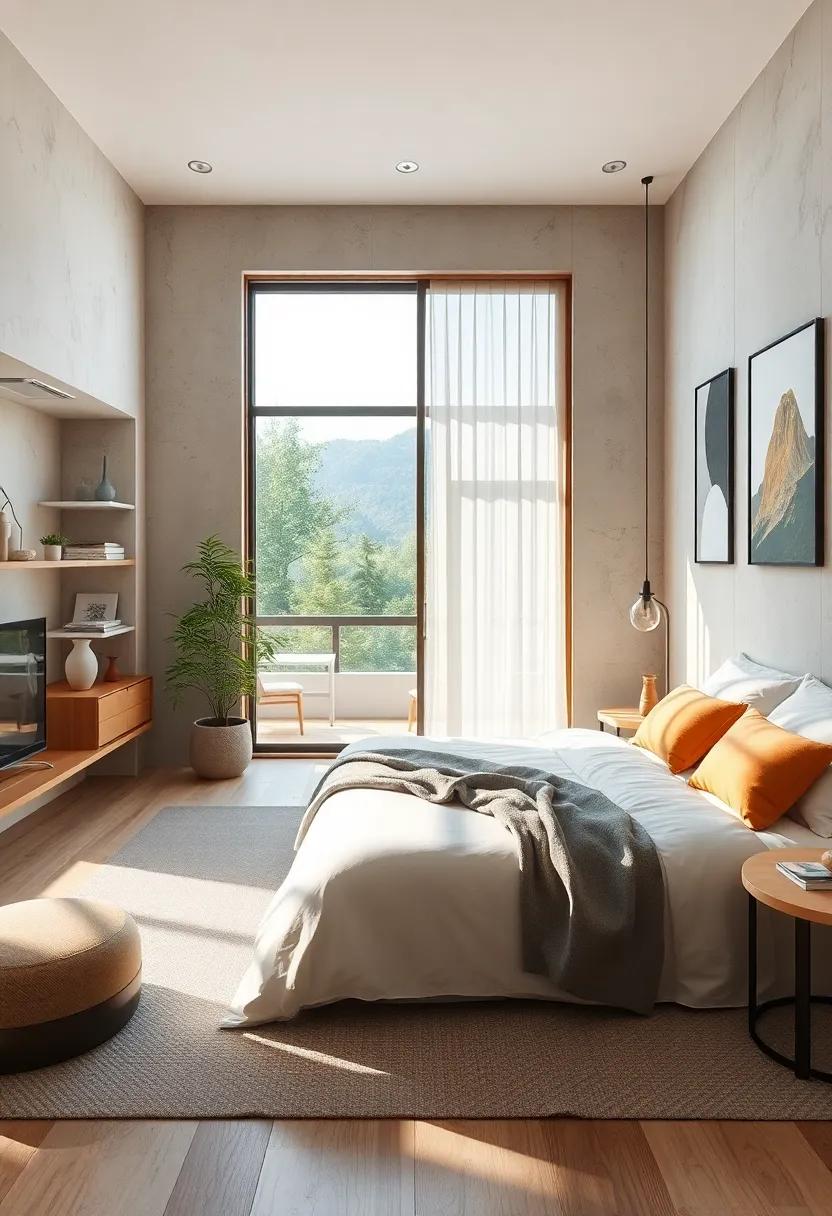
Sliding Shoji doors are a hallmark of Japanese design,seamlessly integrating with open space concepts to foster a sense of tranquility and fluidity in a home. These elegant partitions serve not only as functional entrances but also as visual extensions that blur the lines between indoor and outdoor environments. With their delicate wooden frames and translucent rice paper panels, they allow natural light to filter through, creating a soft, ambient glow that enhances the room’s peaceful atmosphere. The versatility of Shoji doors makes them ideal for various configurations, be it separating a sleeping area from a living space or providing a view into a serene garden. Their minimalist design aligns perfectly with the ethos of Zen,promoting simplicity and balance.
Incorporating these traditional elements into modern architecture encourages a harmonious blend of cultures,allowing homeowners to embrace both aesthetic beauty and practical design. When considering the layout of a Japanese-inspired bedroom,opt for neutral color palettes and natural materials that complement the Shoji doors. Here are key aspects to enhance this design approach:
- Natural Lighting: Use Shoji doors to maximize soft, filtered light.
- Flexible Spaces: Create adaptable areas by utilizing sliding panels.
- Outdoor Connection: Frame views of nature, integrating the outdoors with the indoors.
- Calming Textures: Pair with tatami mats and organic textiles for comfort.
Creating an Inviting Tatami Area as a Relaxation Oasis
Transform your space into a soothing retreat by crafting a tatami area that invites relaxation and tranquility.Integral to traditional Japanese interiors, tatami mats feature natural materials that not only provide comfort but also create a sense of connection to nature. Consider the following elements to enhance your tatami oasis:
- Natural Materials: Choose eco-pleasant tatami mats made from rice straw and covered with woven rush grass for a warm aesthetic.
- Low Seating: Incorporate zaisu (legless chairs) or floor cushions to promote a laid-back atmosphere that encourages movement and ease.
- Soft Lighting: Use soft, diffused lighting through paper lanterns or dimmable fixtures to establish a calming ambience during evenings.
A focal point can elevate the area’s overall appeal. Consider a low table adorned with serene decor elements such as bonsai plants, stylish pottery, or a small water feature.Create harmony by following these simple guidelines for arrangement:
| Element | Purpose |
|---|---|
| Low Table | Centerpiece for gathering and enjoyment |
| Bonsai Tree | Symbol of growth and tranquility |
| Textured Fabrics | Add warmth and comfort |
By creating a carefully curated tatami area, you encourage mindfulness while embracing a harmonious balance between simplicity and beauty in your Japanese bedroom.
Strategically Placed Windows for Optimal Views and Serenity
In the design of a Japanese bedroom,the placement of windows plays a pivotal role in enhancing both aesthetics and tranquility. By carefully situating windows to frame specific views,one can invite the beauty of nature indoors. Consider the following approaches:
- framing Garden Views: Orient windows to overlook a zen garden, allowing the calming visuals of greenery and natural elements to fill the space.
- Maximizing Natural Light: Use larger, strategically placed windows or sliding doors to draw in ample sunlight, which can energize the space while maintaining a sense of openness.
- Embracing seasonal Changes: Position windows to capture seasonal beauty—whether it’s blossoms in spring or falling leaves in autumn—creating a dynamic backdrop that enhances retreat-like serenity.
furthermore, the use of traditional shoji screens can complement window designs, providing adaptability in adjusting views and light levels. When they blend seamlessly with larger glass elements, they offer the ability to transition between privacy and openness, further cultivating a peaceful atmosphere.For those looking to incorporate sustainable practices, the following considerations can be beneficial:
| Element | Benefit |
|---|---|
| Double-Glazed Windows | Enhances insulation and reduces noise. |
| Low-E Coatings | Improves energy efficiency by reflecting heat. |
| Strategic Overhangs | Shields from excessive sun while allowing light in during winter. |
Contemplative Spaces: The Art of Designing Nooks for Stillness
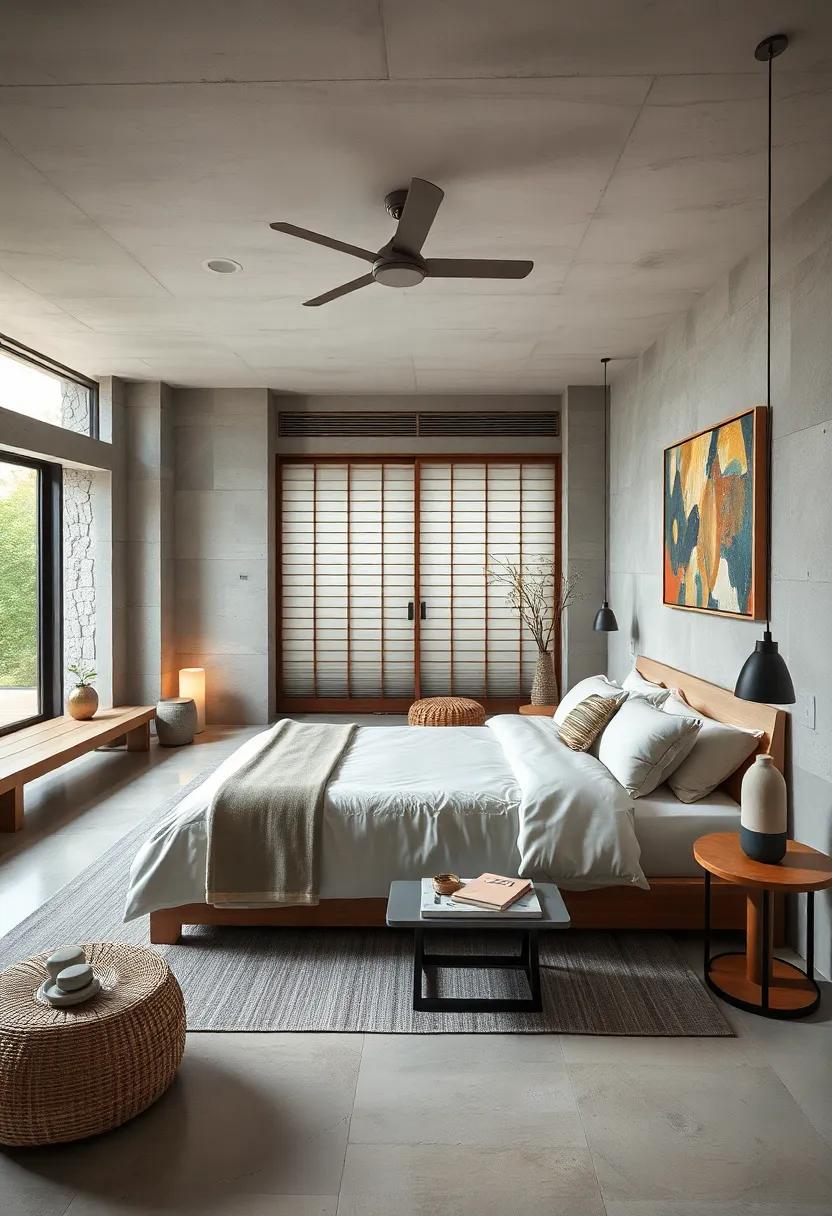
In the realm of interior design, the Japanese ethos encompasses more than mere aesthetics; it embodies a philosophy of living well through simplicity and intentionality. When crafting a bedroom that invites peace, one must consider the artful arrangement of elements. Natural materials such as wood, stone, and rice paper should dominate the space, promoting harmony between nature and home. With an open layout, furniture is sparse—think low platforms and sliding shoji screens that allow the gentle diffusion of light, drawing focus to the surrounding tranquility.
Color plays a pivotal role in establishing a serene environment. Opt for a palette inspired by nature, where muted greens, soft browns, and serene whites create a cohesive backdrop. Functional aspects, such as a built-in tatami mat area for relaxation or meditation, enhance the room’s versatility. To further enrich the experience, consider these essential components:
- Minimalist furnishings that encourage ease of movement
- Indoor plants to breathe life into the space
- Soft textiles such as cotton or linen to add comfort
- Lighting fixtures that mimic natural light to maintain warmth
Use of Simplicity: Choosing Essential Decor for calmness
To cultivate a serene environment, focus on selecting essential decor that embodies simplicity and tranquility. Begin by choosing a muted color palette, favoring soft neutrals and pastel tones that evoke a sense of calm. consider incorporating the following elements, which align with the essence of Japanese aesthetics:
- Natural Materials: Use wood, stone, and bamboo, which not only add warmth but also foster a connection with nature.
- Minimalist Furniture: Opt for low-profile furniture that promotes an open space layout, allowing for unobstructed movement.
- Paper Screens: Integrate shoji screens to subtly divide spaces without compromising light and airiness.
Another key aspect is to limit clutter, ensuring that every item serves a distinct purpose. Accent decor should be intentionally selected; focus on a few statement pieces that reflect personal style without overwhelming the space. A small table or a simple vase can become a focal point when surrounded by negative space. Consider this small table adorned with nature-inspired accents:
| Item | Description |
|---|---|
| Ikebana Arrangement | A simple flower arrangement that highlights nature’s beauty with minimal interference. |
| Zen Sand Garden | A small tabletop garden promoting mindfulness through the act of raking sand. |
Water Features: Adding Soothing Sounds to the Space
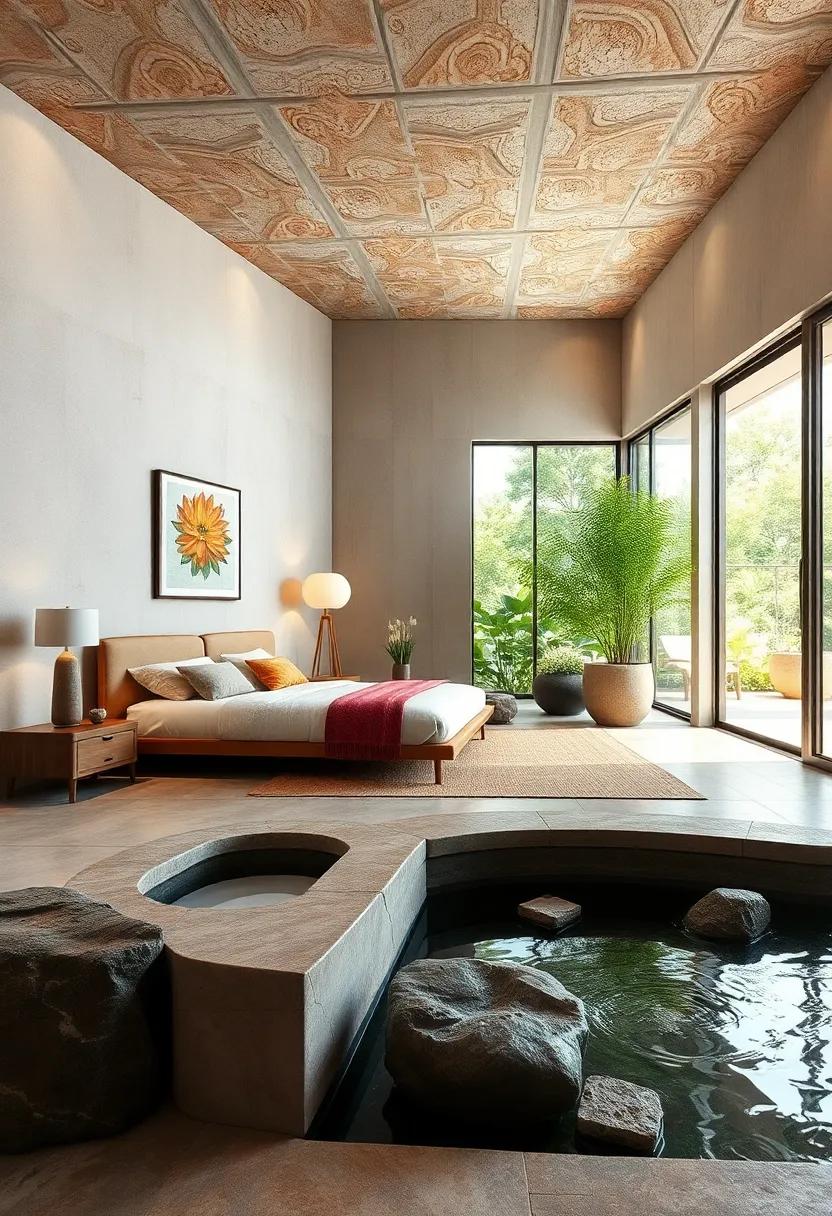
Incorporating water features into your serene living space can transform the atmosphere into a sanctuary of peace. Fountains, ponds, and water walls provide not only visual appeal but also the gentle soundscape that calms the mind. These elements evoke a sense of tranquility, mirroring nature and encouraging relaxation. When positioned thoughtfully, water features can serve as both a focal point and a subtle backdrop, enhancing the overall aesthetic without overwhelming the senses.
When selecting a water feature, consider the following options to complement your Japanese bedroom design:
- Indoor Water Fountains: Compact and elegant designs that fit seamlessly into corners or niches.
- Rock Gardens with Water Basins: create a peaceful retreat with natural elements and flowing water.
- Shallow Reflection Ponds: Ideal for capturing sunlight and surrounding views,adding depth to the space.
To betters integrate this soothing element, place the feature near natural light sources where shadows and reflections play beautifully. The rhythmic sound of flowing water not only enhances mindfulness but also masks disruptive noises, making your bedroom a true haven for rejuvenation.
Thoughtfully Crafted Lighting for a Warm, Serene Glow
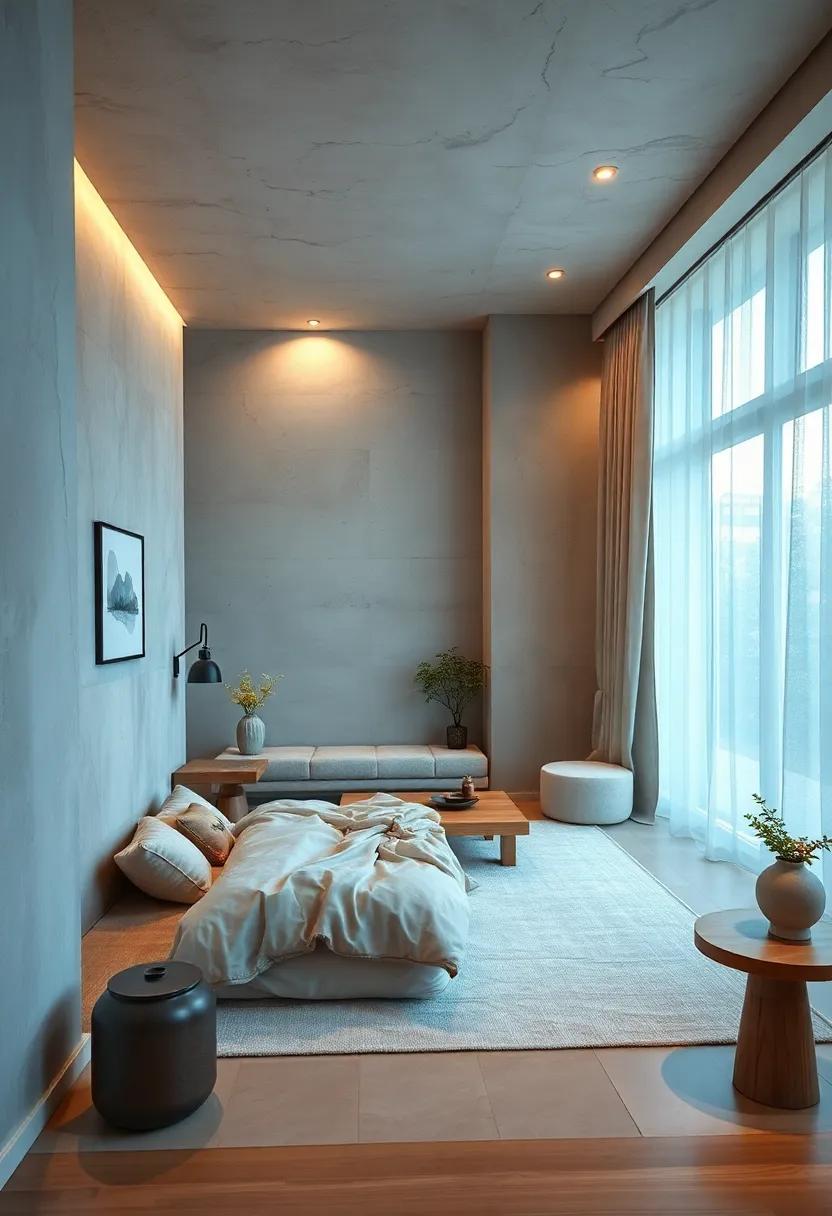
In the pursuit of a tranquil environment, lighting plays a pivotal role in evoking a sense of calm in your Japanese bedroom. When selecting fixtures, consider a blend of natural and artificial light sources that harmonize seamlessly with your chosen decor.soft, warm hues are ideal as they mimic the gentle glow of paper lanterns often found in traditional Japanese settings. Incorporating elements such as:
- Rice paper lamps – These diffuse light beautifully, creating a soft ambiance.
- wall sconces – Mounted at eye level and designed with minimalist aesthetics can accentuate the spaciousness.
- LED strips – Installed along your tatami mats or behind furniture to create a floating effect adds a modern touch.
Moreover, consider the placement and layering of lighting to enhance the open space layout. Use a combination of overhead fixtures and adjustable task lighting to allow for versatility and convenience. By alternating these light sources, you can establish various moods tailored to different activities, from meditation to reading. A simple table can illustrate some effective strategies:
| Lighting Type | Purpose | Placement Suggestions |
|---|---|---|
| Ambient Light | Sets the overall mood | Center of the room |
| Task Light | Focus on specific activities | Near reading nooks or work areas |
| Accent light | Highlight decor elements | Pointing at wall art or plants |
Textural Variations in Fabrics and Surfaces for Comfort
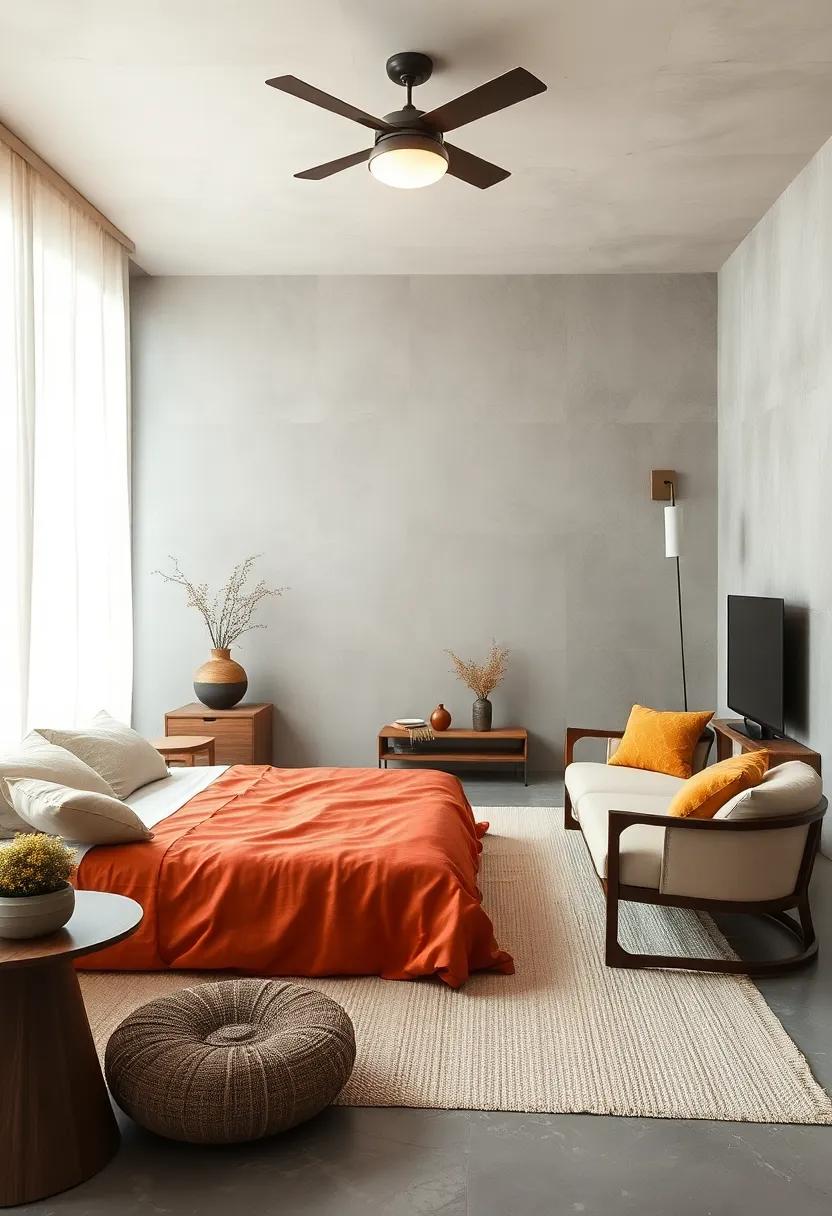
Creating a serene environment in a Japanese bedroom goes beyond simply arranging furniture; it also encompasses the selection of fabrics and surfaces that enhance comfort and promote tranquility. The essence of Japanese design emphasizes natural materials and earthy tones. consider using fabrics such as linen, cotton, and silk, which offer a softness that invites relaxation. The implementation of organic textures, like a handwoven tatami mat or a smooth wooden surface, creates a harmonious balance that invites a sense of calm. Incorporating cushions and throws with varying textures can also add depth, inviting one to sink into the comfort of the space.
To further elevate the atmosphere, explore incorporating a variety of surface finishes that reflect light and create a warm ambiance. Velvet can add a luxurious touch while maintaining a cozy feel, perfect for pillows or window treatments. meanwhile,natural fibers like jute or hemp rugs can lend an organic touch underfoot,grounding the space beautifully. An attention to detail in texture selection not only enhances tactile comfort but also elevates the visual narrative of the room. Consider the following elements to curate the ideal tactile experience:
| Material | Texture | use |
|---|---|---|
| Linen | Soft and breathable | Bedding,curtains |
| Cotton | lightweight and versatile | Pillows,throws |
| Silk | Smooth and luxurious | Decorative accents |
| Jute | Textured and natural | Rugs,wall decor |
| Velvet | Rich and plush | Cushions,upholstery |
Open Shelving Solutions to Showcase Meaningful Artifacts
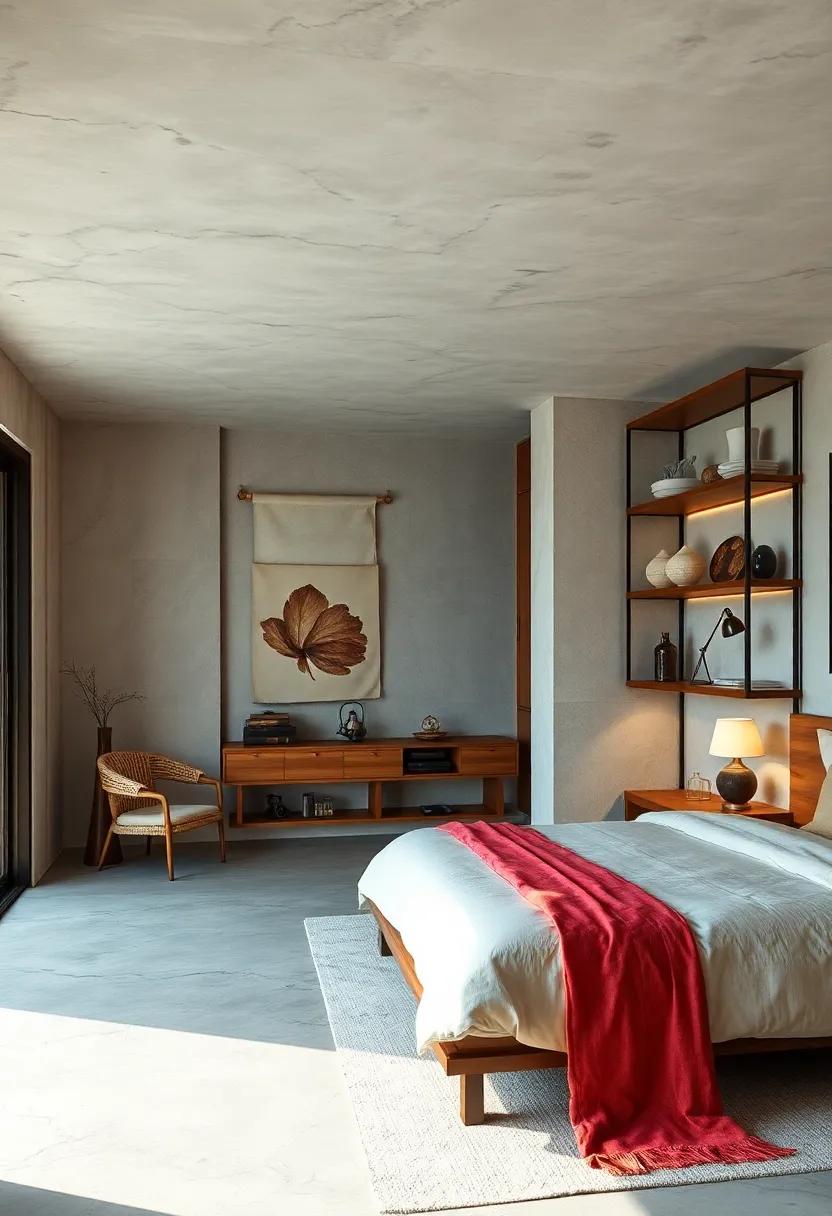
In a Japanese bedroom designed for calmness and simplicity,open shelving can become a focal point that not only organizes but also elevates the aesthetic.By utilizing clean lines and natural materials, open shelving provides a versatile solution for displaying artifacts that resonate with personal meaning. Consider showcasing items such as:
- Natural elements: Bamboo, stones, or sand in decorative containers
- Artistic expressions: Handcrafted pottery or traditional tea sets
- Cultural symbols: Calligraphy scrolls or framed haikus
- Books: Zen philosophy texts or art books
To maintain a serene environment, the arrangement of these artifacts is crucial. Opt for an attractive display while ensuring that it doesn’t overwhelm the senses. Use neutral colors for the shelving and items to enhance the tranquility of the space. You may also add a small table to complement the shelves, allowing for additional decorative elements or even a zen garden. Here’s a simple representation of how to organize your artifacts effectively:
| Category | Example item | Placement advice |
|---|---|---|
| Natural Elements | Bamboo Arrangement | Corner of the shelf |
| Artistic Expressions | Handcrafted Pottery | Center display |
| Cultural Symbols | Framed Calligraphy | Above the eye level |
| Books | Zen Philosophy Text | Stack or side-by-side |
Harmony in Layers: Soft Rugs and blankets for Warmth
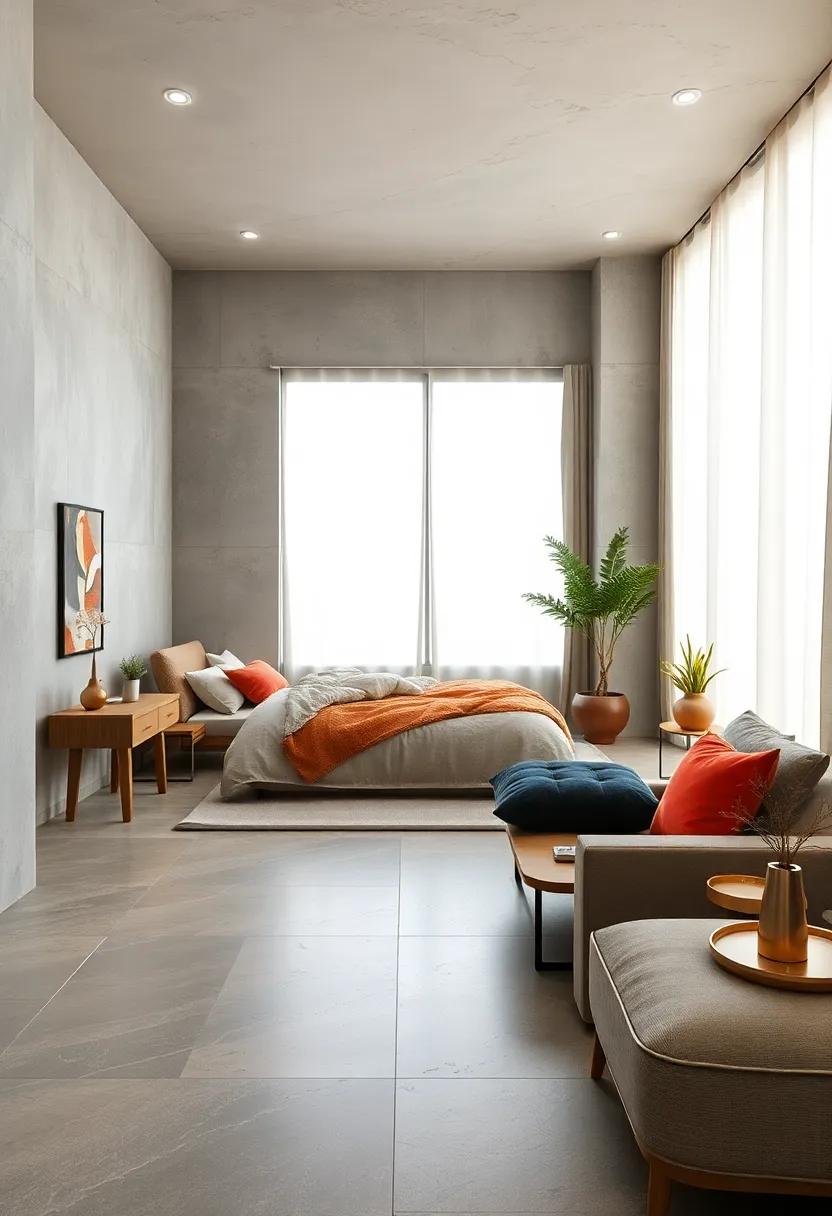
In the pursuit of a serene sanctuary, incorporating soft rugs and blankets introduces layers of warmth and texture that elevate the aesthetic of your Japanese bedroom. Natural fibers such as wool,cotton,and jute not only provide comfort underfoot but also resonate with the organic principles central to Japanese design. Consider selecting rugs in muted tones or minimalist patterns, allowing them to harmonize with the understated beauty of your space. The gentle touch of these materials can transform a stark room into a welcoming haven, making it ideal for both relaxation and contemplative practices.
Complementing your rugs with carefully chosen blankets enhances the overall ambiance. Opt for lightweight throws or futon-style quilts that add a visual softness and can be easily tucked away when not in use. Highlighting the interplay between fabric textures fosters a sense of cozy elegance. Here’s a simple table to showcase your options:
| Material | Benefits | Color Palette |
|---|---|---|
| Wool | warmth & Durability | Earthy Tones |
| Cotton | Breathable & Soft | Pale Pastels |
| Jute | natural & Eco-Friendly | Beige & Neutral Shades |
Crafting a Meditation Corner for Mindfulness Practices
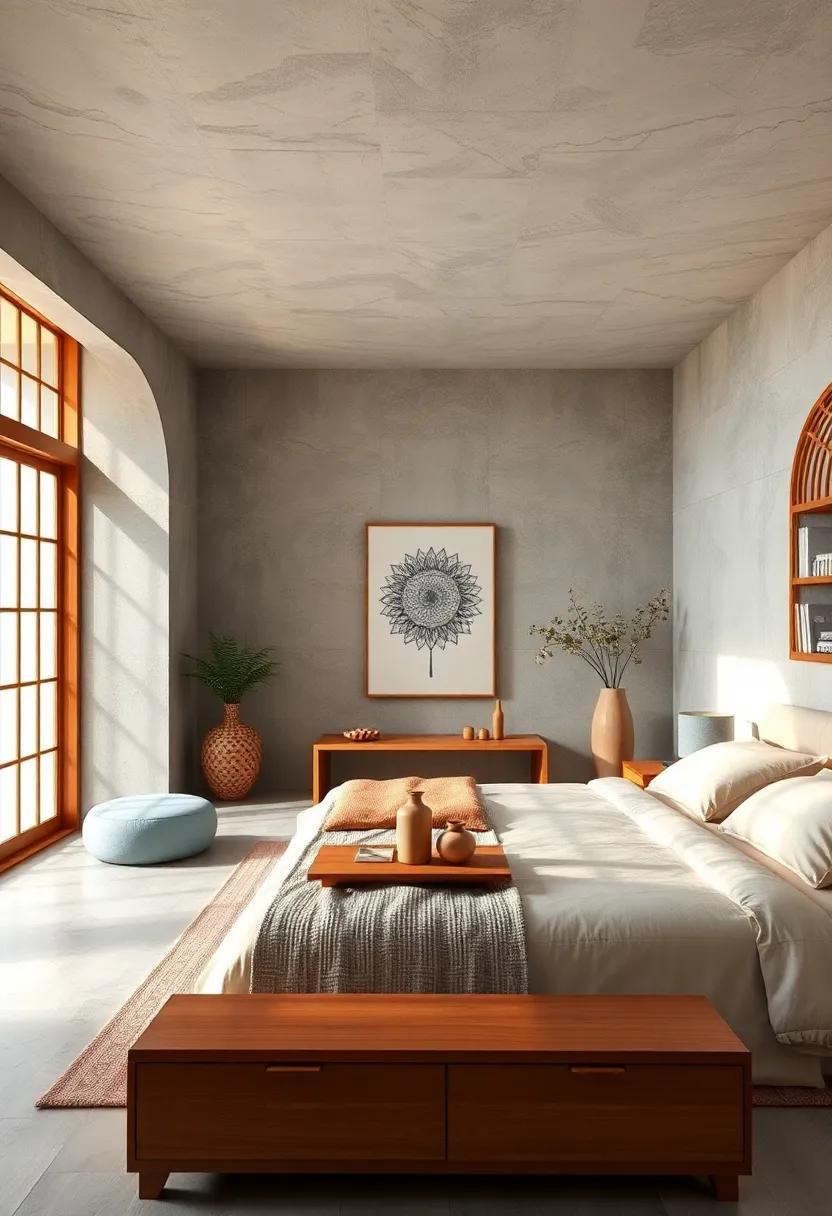
Creating a dedicated space for mindfulness within your Japanese bedroom can significantly enhance your meditation practice. Begin by selecting a quiet corner,preferably near natural light or a window,to allow the gentle touch of sunlight to uplift your mood during practice.Use minimal furniture to maintain an uncluttered look; a simple, low meditation cushion or floor mat can serve as your focal point. Incorporate elements that resonate with tranquility, such as bamboo plants, stones, or a small water feature, to invoke the serene essence of nature. Soft, muted colors like pale greens and warm browns can further cultivate a peaceful ambiance.
To deepen your experience, consider adding sensory details that complement your practice. Aromatherapy plays a crucial role in enhancing mindfulness, so include an oil diffuser with soothing scents like lavender or sandalwood. Soft background music or chimes can also create a more immersive environment. Use a small table to display a few essential items such as a journal for reflection, a meditation gong, or meaningful artifacts that inspire calm. Creating a personalized, inviting nook not only fosters deep relaxation but also encourages regular mindfulness rituals, inviting serenity into your daily life.
Concealed Storage Options for an Uncluttered Sanctuary
Creating a Flow: The Importance of Open Layouts in Room Design
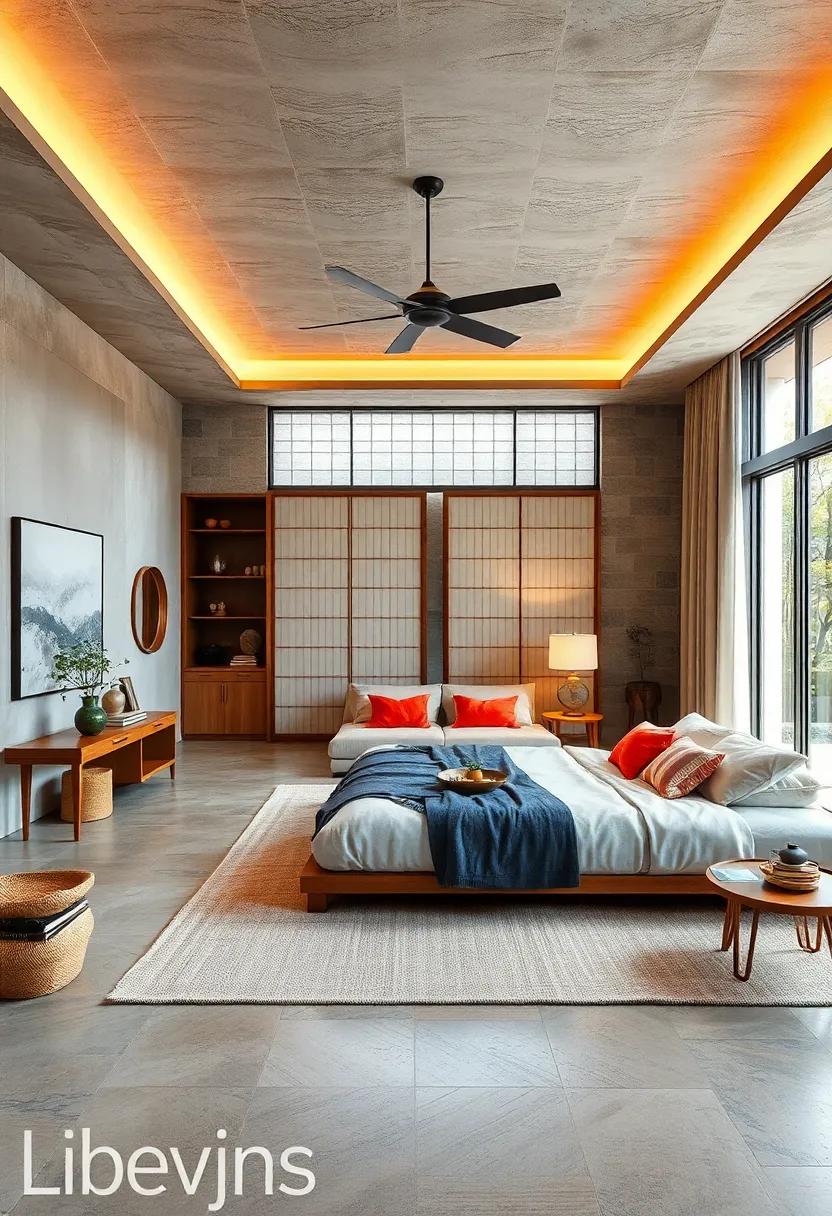
Creating an open layout is fundamental in achieving a serene atmosphere, especially in the context of a Japanese-inspired bedroom. This design approach emphasizes natural light and airflow, which are essential for fostering a calm and peaceful environment. In an open layout, walls are minimized, allowing for fluid movement between areas. This design can be further enhanced by incorporating elements like shoji screens that can be drawn back, preserving the essence of traditional Japanese aesthetics while maintaining a contemporary feel. Integrating multifunctional furniture, such as a low bed with storage options, keeps the space uncluttered, inviting tranquility into daily living.
To further enhance the tranquil ambiance, consider using a harmonious color palette and materials that reflect nature. Light woods,neutral tones,and soft textiles help create a cohesive look that contributes to an open,airy feeling. elements such as indoor plants and minimalist décor can be strategically placed to bring a touch of nature inside, promoting a sense of peace. below is a fast reference table on effective materials and color choices that align with the open layout design principle:
| Material | Color Palette |
|---|---|
| Light Wood (e.g., cedar, bamboo) | soft White |
| Textiles (linen, cotton) | Muted Pastels |
| Ceramics (minimalist vases, bowls) | Natural Earth Tones |
| Stone Accents (granite, slate) | Deep Greens and Blues |
Balance and Symmetry: guiding Principles for Arrangement
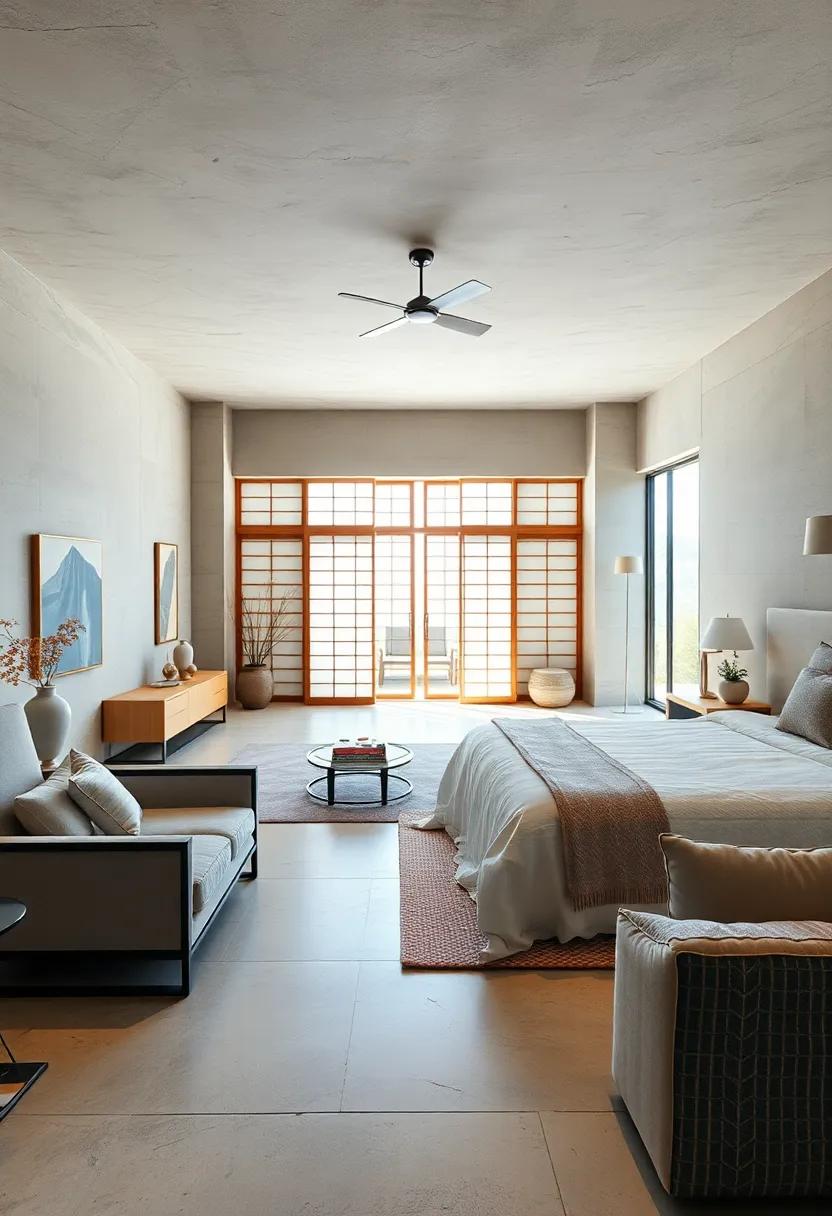
Creating a harmonious bedroom in the style of traditional Japanese aesthetics revolves around the principles of balance and symmetry. To achieve this serene atmosphere, consider positioning key elements within the room in a way that promotes a sense of equal weight and visual appeal. Such as, arrange your sleeping area centrally, flanked by low-profile nightstands to create a focal point. Incorporate natural materials and soft colors to enhance the calming effect and allow the space to breathe. Remember, the absence of clutter is essential; keeping surfaces clear ensures that the design maintains its tranquil essence.
To further imbue the room with balanced energy, pay attention to the placement of decorative elements. Utilize a combination of geometric shapes and organic forms to enrich the visual narrative. Fill the space with a few thoughtfully selected pieces, such as:
- Minimalist art that draws the eye without overwhelming the senses
- Indoor plants that breathe life into the space while maintaining a simple silhouette
- Textured fabrics for bedding and cushions that add warmth without clutter
Incorporate symmetry by balancing out larger items with smaller accents on either side. As an example, when using a screen or shoji, flank it with soft, diffused lighting to create unity and warmth. This intentional design approach fosters tranquility and invites a soothing atmosphere conducive to restful living.
Aromatherapy Elements: Enveloping Your Space in Blissful Scents
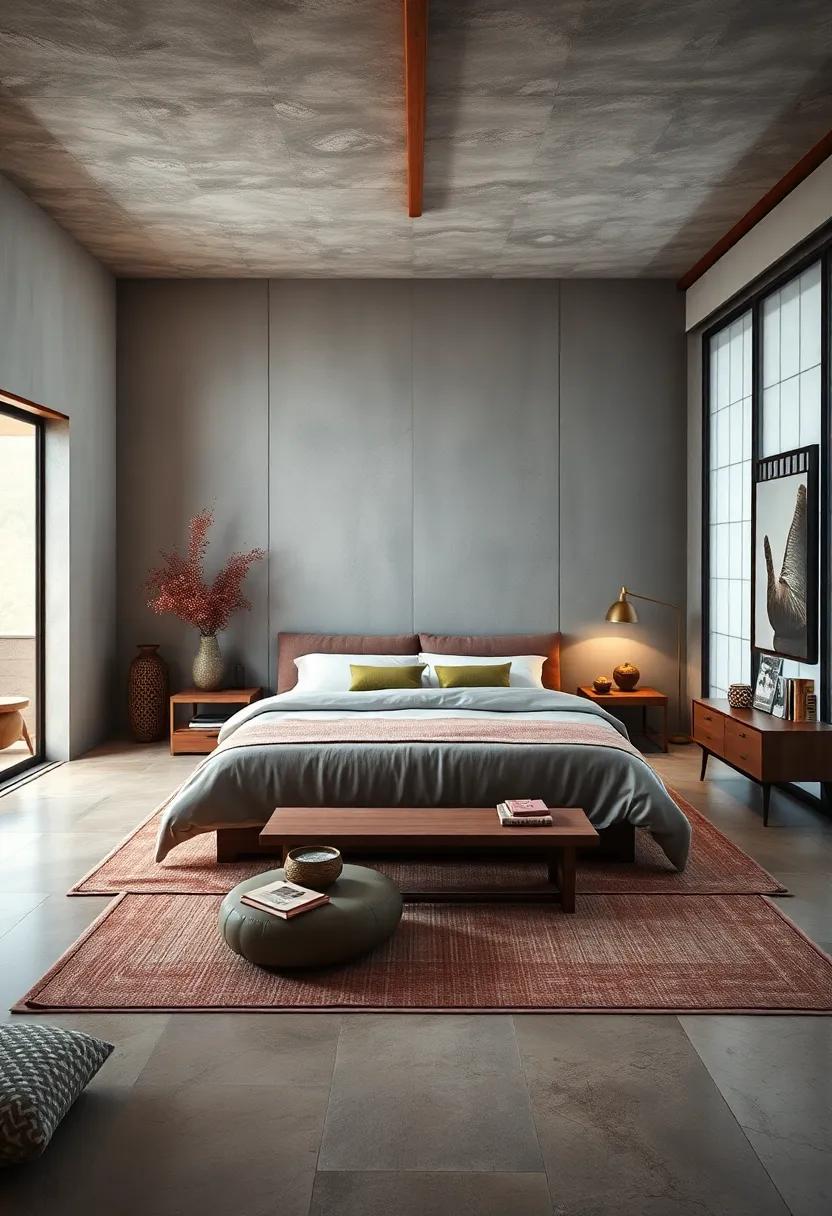
Creating a serene atmosphere in your Japanese bedroom involves more than just minimalist decor; it invites the art of aromatherapy into your sanctuary. The strategic placement of essential oils can transform your living space into a blissful haven. Consider incorporating diffusers and essential oil blends that promote calmness and clarity. Here are some scents that can enhance your tranquil environment:
- Lavender: Renowned for its relaxation properties,lavender helps to ease stress and promote restful sleep.
- Sandalwood: This warm, woody aroma brings an air of grounding and stability to your space.
- Ylang-Ylang: With its sweet floral notes, ylang-ylang calms the senses and encourages feelings of peace.
To maximize the effects of these scents, consider designing a seasonal scent rotation that aligns with your mood and the changes in nature. You might create a cozy corner that features a small table adorned with a gorgeous diffuser and a selection of your favorite essential oils. Additionally, incorporating plants known for their soothing fragrances, such as jasmine or geranium, can enhance the tranquil ambiance while also improving air quality. below is a simple overview of how to blend your aromas effectively:
| Essential Oil | Blending Tips |
|---|---|
| Lavender | Mix with chamomile for enhanced relaxation. |
| Sandalwood | Pair with bergamot for an uplifting blend. |
| Ylang-Ylang | Combine with sweet orange to elevate your mood. |
Quiet Corners: Setting Up Cozy Reading Spaces for Reflection
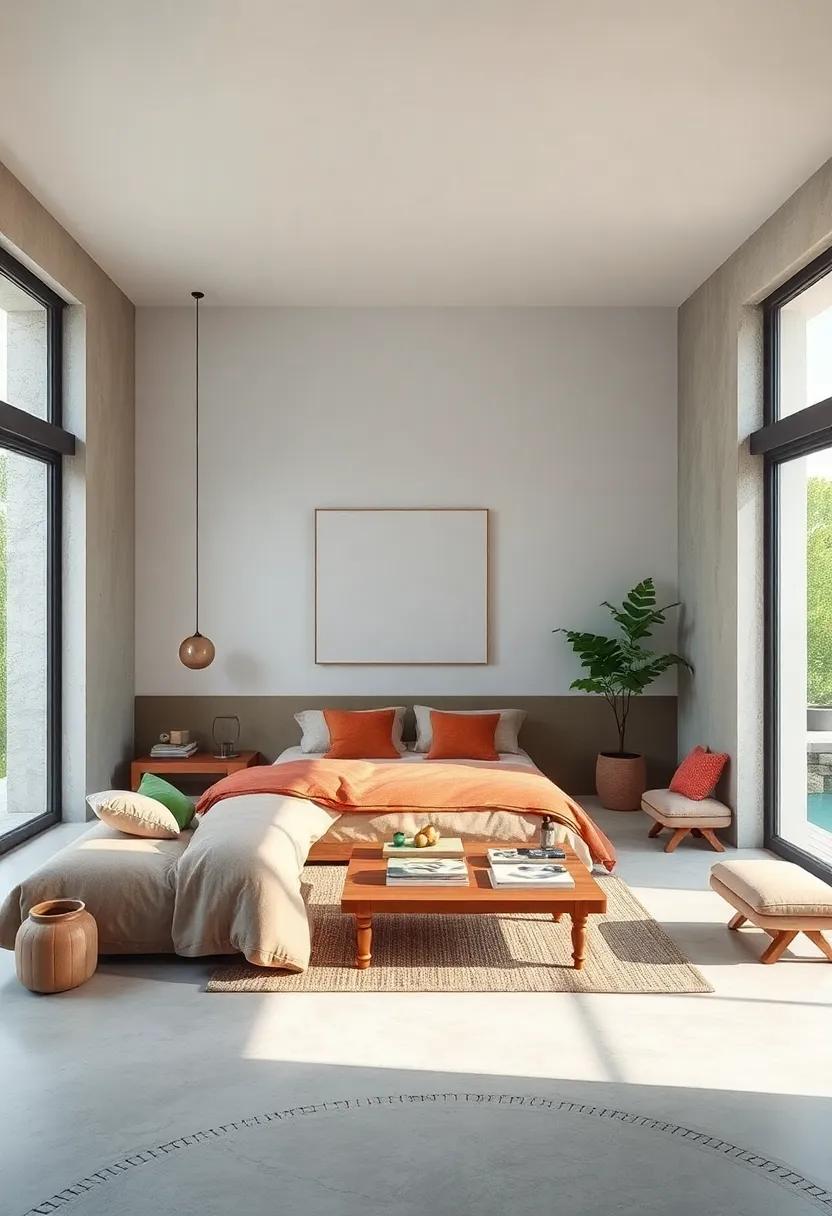
Creating a cozy reading space requires a thoughtful arrangement of elements that foster comfort and serenity. start by selecting a comfortable chair or a tatami mat where you can sit comfortably for hours. Incorporate a soft throw blanket and some plush cushions to invite you to relax and curl up with a good book. Adding a small side table can transform the space into a functional nook where a steaming cup of tea or a fragrant candle awaits, enhancing the sensory experience. Incorporate plants or a feng shui water feature to ensure a good flow of energy, helping you to immerse in a world of stories.
Lighting plays a crucial role in establishing a tranquil atmosphere. Aim for soft, warm lights that can be adjusted based on the time of day or mood. Consider layering your lighting with floor lamps and table lamps featuring rice paper shades, casting a gentle glow. To enhance the ambiance, add decorative elements such as a wall-mounted bookshelf to hold your favorite reads while keeping the space uncluttered. Keep decor minimal but meaningful; consider displaying an elegant calligraphy piece or a serene landscape painting that resonates with the peace you seek. These carefully curated components work together to create an inviting corner that encourages reflection and nurtures your love for reading.
Intentional Art Placement to Inspire Calmness and Reflection

In a Japanese bedroom designed for tranquility, the careful selection and placement of art plays a pivotal role in cultivating a serene atmosphere. Imagine art pieces that echo the simplicity and elegance of nature, suspended minimally on the walls or standing gracefully on low platforms. To enhance the experience of calmness and reflection, consider incorporating:
- Abstract Landscapes: Evoke a sense of open space and freedom.
- Minimalist Calligraphy: Words conveying peace and mindfulness.
- Nature-Inspired photography: Capture moments of stillness in nature.
Each piece should resonate with the overall design ethos of the room,allowing for effortless integration into the space. Aim for muted color palettes that complement traditional tatami mats and wooden furnishings, thus reinforcing a cohesive aesthetic. An effective strategy could be the use of a small table to showcase rotating artworks, allowing for personal interaction and renewal of inspiration. Here’s a simple layout idea:
| Art Piece | Placement | Effect |
|---|---|---|
| Japanese Cherry Blossom Painting | Above the Headboard | Creates a focal point and evokes serenity. |
| Stone Lantern Sculpture | Corner Shelf | Adds organic charm and encourages reflection. |
| Zen sand Garden | Low Table Centerpiece | Invites mindfulness and tranquility during interaction. |
The Conclusion
As we conclude our exploration of “,” it’s clear that the essence of a peaceful sanctuary lies in both simplicity and intention.By integrating the principles of Japanese design—natural materials, minimalism, and thoughtful association—you can create a space that not only nurtures rest but also invites mindfulness into your daily routine.
Remember, the journey to crafting your own oasis of calm is personal and evolving. As you take steps towards this tranquil transformation, let each choice reflect your unique vision of serenity. Whether it’s the soothing hue of a shoji screen or the gentle texture of tatami mats underfoot, every element contributes to an atmosphere that encourages relaxation and introspection.
As you embark on this peaceful design endeavor,may your bedroom become more than just a sleeping space; may it serve as a harmonious retreat that revitalizes your spirit and enhances your well-being. Embrace the tranquility, cherish the simplicity, and let your Japanese-inspired haven bring you a sense of serenity for years to come.
As an Amazon Associate I earn from qualifying purchases.




